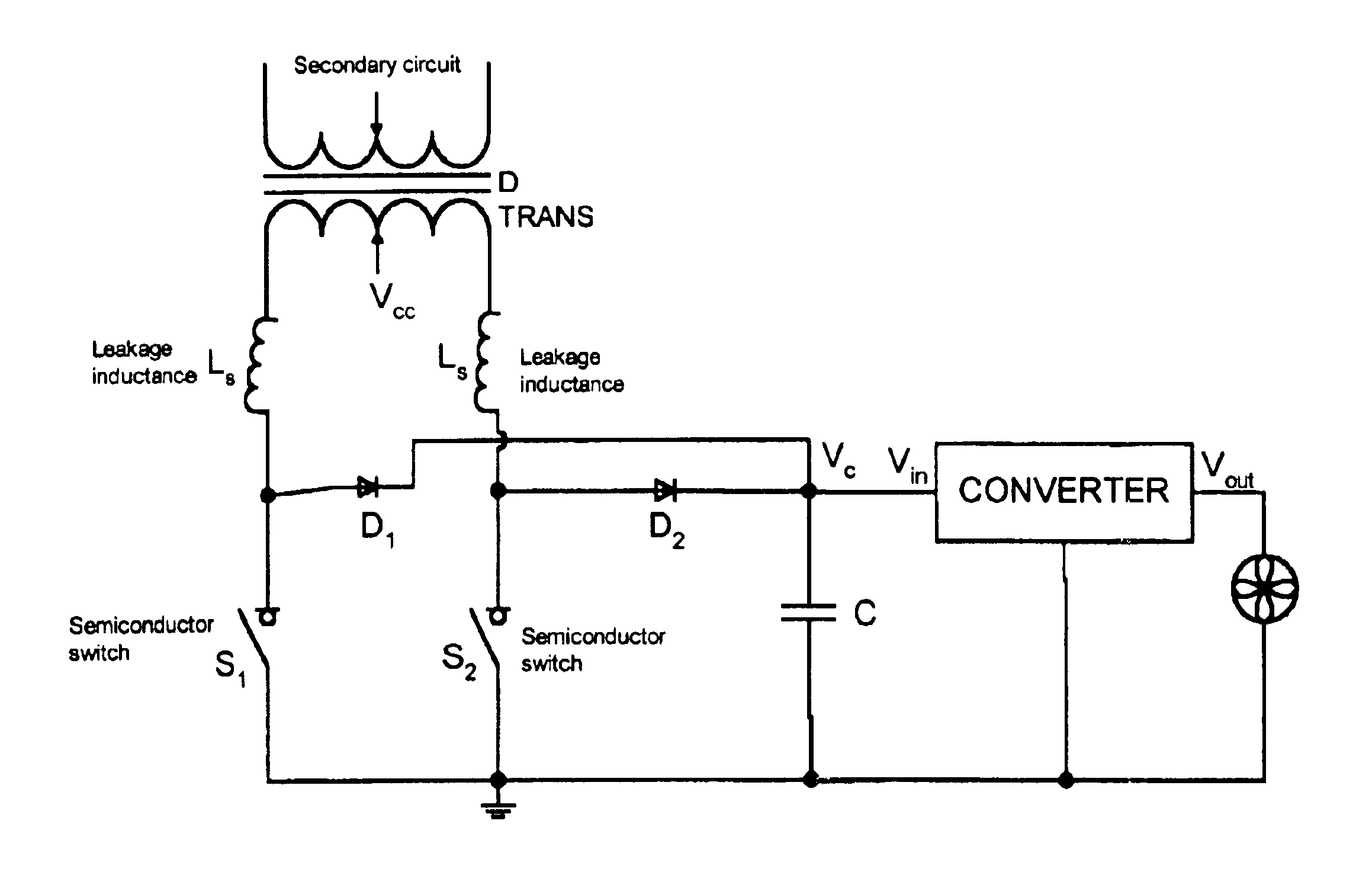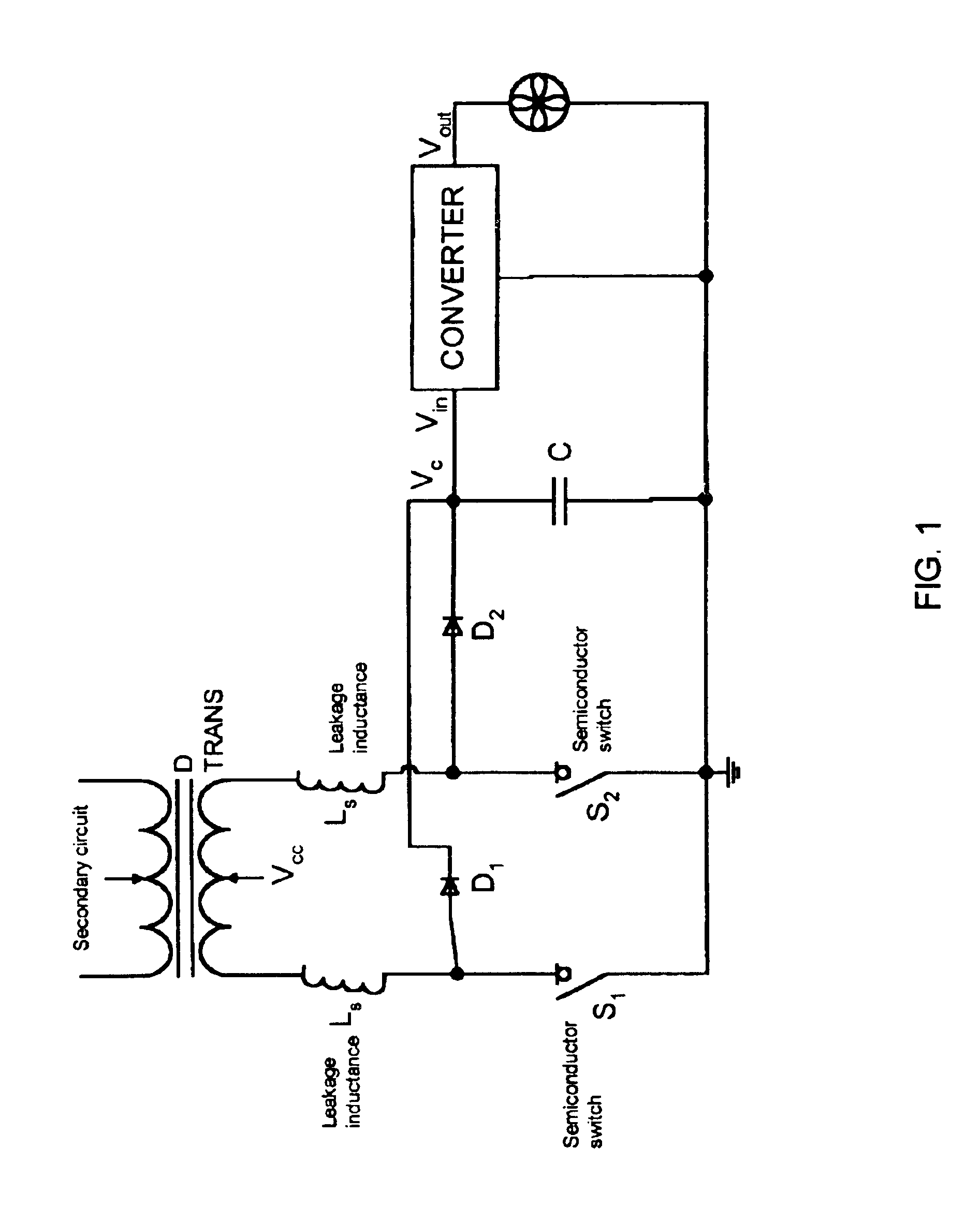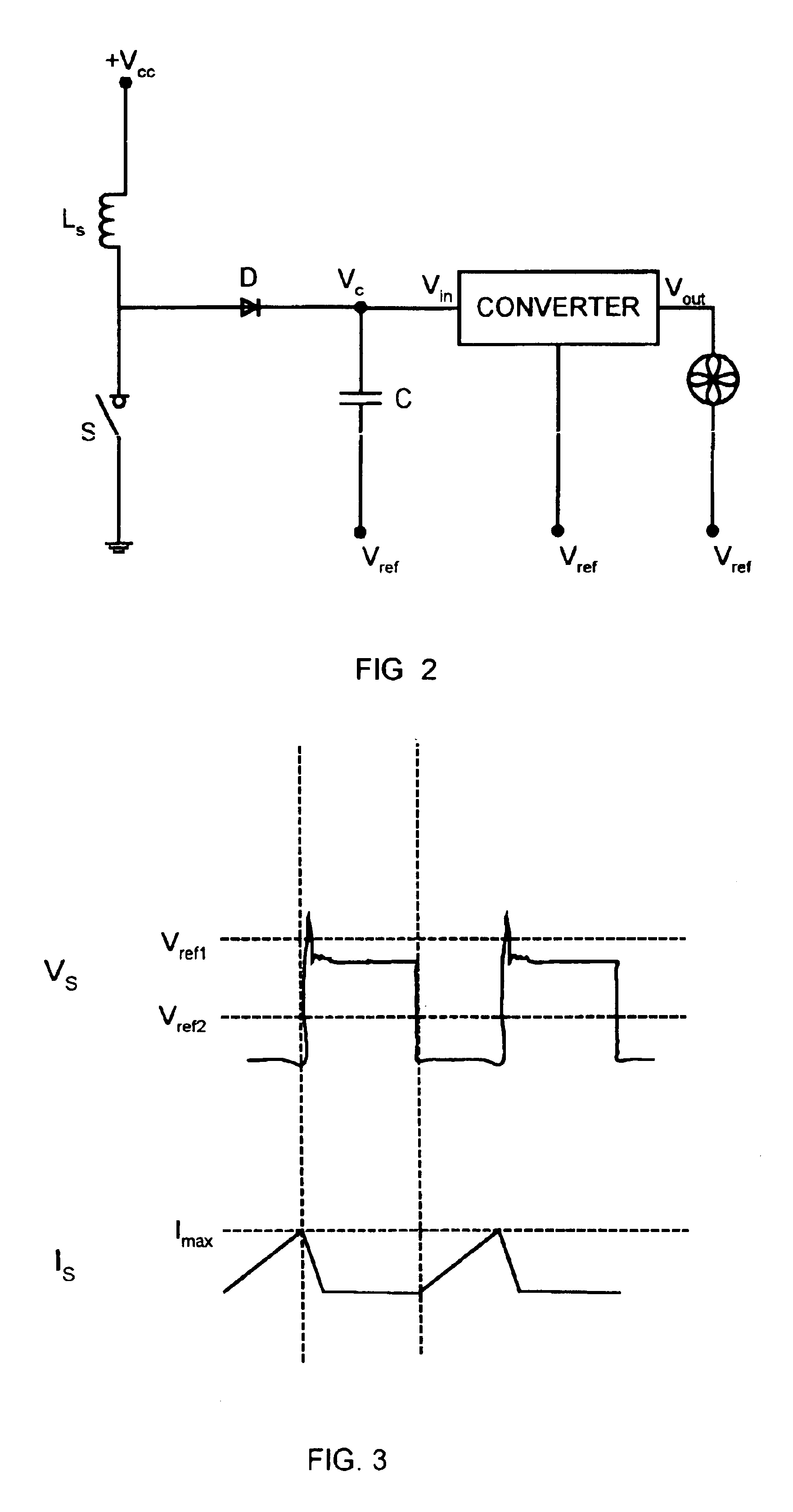Self-regulated cooling system for switching power supplies using parasitic effects of switching
a switching power supply and self-regulated technology, applied in power conversion systems, cooling/ventilation/heating modifications, gaseous coolants, etc., can solve problems such as overvoltage, snubber capacitors charging up with current, and practically impossible to build transformers without leakage inductan
- Summary
- Abstract
- Description
- Claims
- Application Information
AI Technical Summary
Benefits of technology
Problems solved by technology
Method used
Image
Examples
Embodiment Construction
The circuit that comprises the present invention collects part of the energy stored in the parasitic or leakage inductance into a capacitor. From that capacitor there may be a circuit connected to a cooling element, such as a fan, a liquid pump, a Peltier device, or the like. The circuit ensures that, for maximum output power, the cooling element and the protected semiconductors are still in the safe operating area (a step-down or step-up converter can be used for this purpose). FIG. 1 depicts the invention implemented for a push-pull converter. However, the invention is suitable for any circuit where an overvoltage can occur on a switch due to a leakage inductance of a transformer or an inductor or otherwise. This could, for example, be true for several topologies such as Forward, Flyback, H-bridge, and Buck. To this end, FIG. 2 depicts an embodiment of the invention having general application.
FIGS. 1 and 2 each illustrates a cooling system for a switching power supply, the power s...
PUM
 Login to View More
Login to View More Abstract
Description
Claims
Application Information
 Login to View More
Login to View More - R&D
- Intellectual Property
- Life Sciences
- Materials
- Tech Scout
- Unparalleled Data Quality
- Higher Quality Content
- 60% Fewer Hallucinations
Browse by: Latest US Patents, China's latest patents, Technical Efficacy Thesaurus, Application Domain, Technology Topic, Popular Technical Reports.
© 2025 PatSnap. All rights reserved.Legal|Privacy policy|Modern Slavery Act Transparency Statement|Sitemap|About US| Contact US: help@patsnap.com



